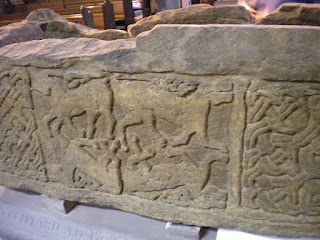The Lost Island

In search of Hinba It's perhaps as important as lona - but where is it? The location of the island of Hinba is one of the great mysteries of Scottish history. Hinba is mentioned in Adomnan's Life of Columba in connection with some of the most significant episodes in the saint's life. It was there that the Holy Spirit appeared to Columba in the form of a divine vision, commanding him to ordain Aedan mac Gabrain as king of Dal Riata. He was also told many secrets, made clear on the obscurities of Scripture, and allowed to see into the past and future. The saint received some of his most prestigious visitors on Hinba including four Irish saints for whom he celebrated mass there. But Hinba also had its darker side. The island was used by the early Christians as a penitentiary. During one visit to the religious recluses there, called anchorites, Columba ordered that they be allowed an indulgence of food. To his displeasure, this was refused by one Neman mac Cathair. The saint...





